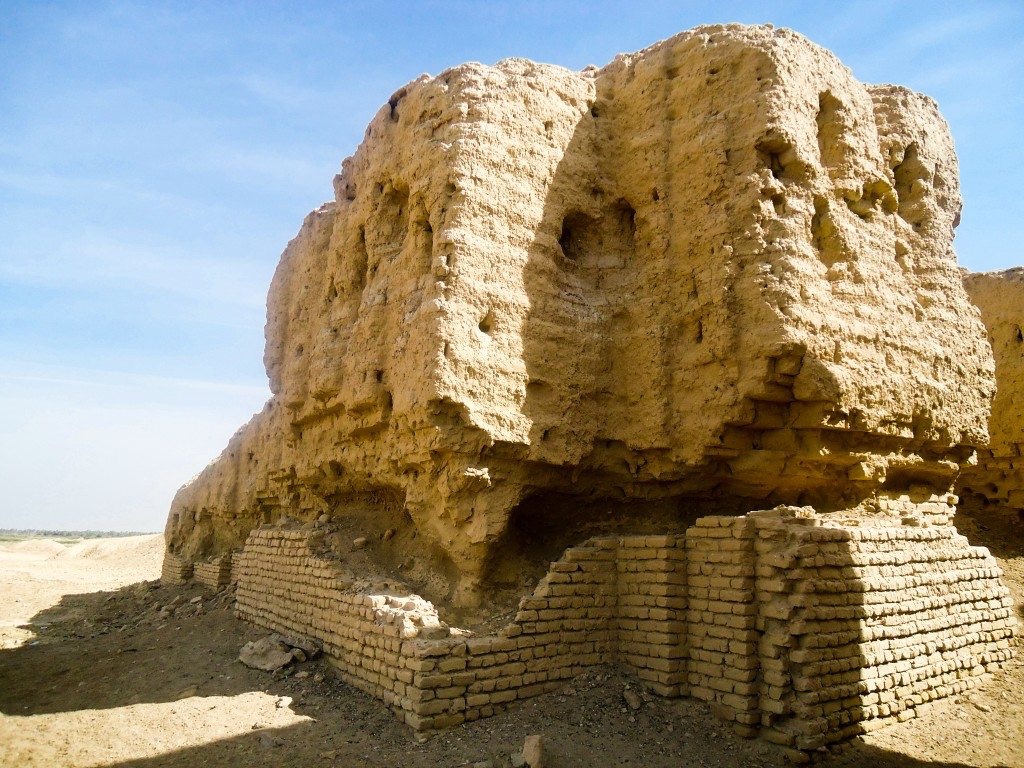The Ziggurat of Kish is an ancient structure located in the once prominent city of Kish, which is now part of modern-day Iraq. This towering edifice is a testament to the architectural ingenuity and religious devotion of the Sumerian civilization. Ziggurats were massive, terraced structures that served as the base for temples and were often dedicated to the main deity of a city. The Ziggurat of Kish, although not as well-preserved as some of its counterparts, like the famous Ziggurat of Ur, remains a significant archaeological site that provides insight into the early urban and religious practices of Mesopotamia.
Get your dose of History via Email
Historical Background of the Ziggurat of Kish
The Ziggurat of Kish was unearthed during excavations led by the Oxford Field Museum Expedition in the 1920s. Leonard Woolley, a prominent British archaeologist, headed the team. The Sumerians, known for their contributions to early urban development, built this ziggurat. It dates back to the early dynastic period of Sumerian civilization, around the 3rd millennium BC. The city of Kish held strategic and religious significance, often cited as the seat of kingship in Sumerian texts.
Over time, Kish and its ziggurat witnessed numerous rulers and was a hub of activity. The city was a focal point for political and economic power in ancient Mesopotamia. The ziggurat itself likely served as a central place of worship and a symbol of the city’s prosperity and piety. It stood as a testament to the city’s importance and the Sumerian’s architectural prowess.
Throughout history, Kish changed hands between various Mesopotamian empires. The ziggurat, like many structures of its kind, would have been restored and possibly rebuilt by successive rulers. This practice was common as new leaders often sought to legitimize their rule by renovating or constructing religious monuments. However, specific details about later inhabitants or significant historical events at the site are scarce.
The Ziggurat of Kish, while not as famous as some other Mesopotamian ziggurats, played a role in the region’s history. It stood through the rise and fall of empires, bearing witness to the ebb and flow of Mesopotamian civilization. The site’s excavation has provided valuable artifacts and information, contributing to our understanding of Sumerian culture and religion.
Despite its dilapidated state, the Ziggurat of Kish remains a crucial piece of the historical puzzle of Mesopotamia. It offers a glimpse into the grandeur of ancient cities and the spiritual life of the people who built them. The ziggurat’s ruins are a silent narrative of the once-thriving city of Kish and its inhabitants’ connection to the divine.
About the Ziggurat of Kish
The Ziggurat of Kish, like other ziggurats of its time, was a massive structure composed of a series of platforms. These platforms decreased in size as they ascended, giving the ziggurat a terraced appearance. The core of the ziggurat was likely made of sun-dried mud bricks, a common building material in Mesopotamia due to the scarcity of stone. The exterior may have been covered with kiln-fired bricks to protect the core from the elements.
Architectural highlights of the Ziggurat of Kish would have included its staircases and ramps. These features allowed priests and worshippers to ascend to the temple at the top. The temple was the most sacred area, where rituals and offerings to the city’s patron deity took place. The exact dimensions of the Ziggurat of Kish are not known, but it would have been designed to be visible from a great distance, dominating the city’s skyline.
The construction methods of the Ziggurat of Kish would have involved extensive labor. Workers would have needed to mold, dry, and fire millions of bricks. The transportation and assembly of these bricks required advanced planning and organization, indicative of the Sumerians’ sophisticated society. The ziggurat’s design also reflects an understanding of structural engineering, necessary to build such a monumental edifice.
Over the centuries, the Ziggurat of Kish would have undergone renovations and reconstructions. Each new layer added to its height and grandeur, symbolizing the city’s enduring significance. The ziggurat’s orientation and layout were likely aligned with astronomical or religious significance, although the specifics are lost to time.
Today, the Ziggurat of Kish stands in ruins, but its remnants still convey the scale and ambition of its builders. The site continues to be an important focus of archaeological study, as it holds clues to the technological and religious practices of one of the world’s earliest civilizations.
Theories and Interpretations
Several theories surround the Ziggurat of Kish, primarily concerning its use and significance. Most scholars agree that ziggurats functioned as religious centers, with the temple at the top serving as a dwelling place for the gods. The Ziggurat of Kish would have been no exception, acting as a bridge between the earthly and the divine.
There are mysteries about the ziggurat, such as the specifics of the rituals performed there. Some hypothesize that these rituals included aspects of astronomy, as the ziggurat’s height would have provided an unobstructed view of the sky. However, without explicit records, these theories remain speculative.
Interpretations of the ziggurat’s design and construction have been matched to historical records where possible. Cuneiform tablets and other archaeological finds have provided some context. Yet, the full understanding of the ziggurat’s role and the extent of its religious significance is still a matter of scholarly debate.
Dating the Ziggurat of Kish has involved methods such as stratigraphy and radiocarbon dating. These techniques have helped establish a timeline for the construction and use of the ziggurat. However, the exact dates remain approximate due to the challenges of dating ancient structures.
The Ziggurat of Kish continues to be a subject of interest for historians and archaeologists. Its ruins offer a tantalizing glimpse into the past, and each new discovery has the potential to alter our understanding of this ancient monument.
At a glance
- Country: Iraq
- Civilization: Sumerian
- Age: Approximately 4,500 years old (circa 2500 BC)
Conclusion and Sources
- Wikipedia – https://en.wikipedia.org/wiki/Kish_(Sumer)

